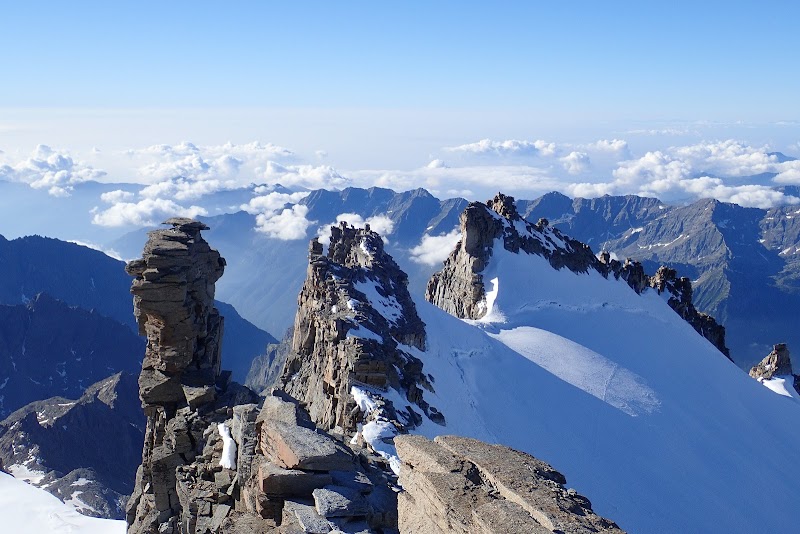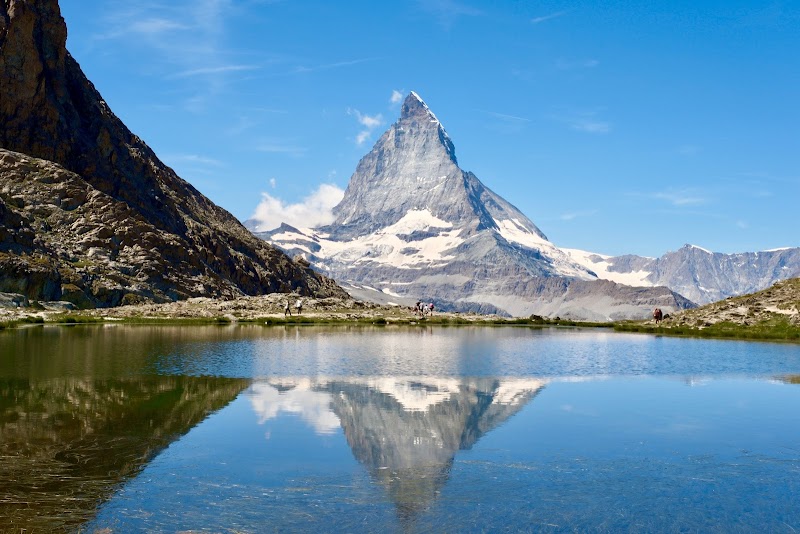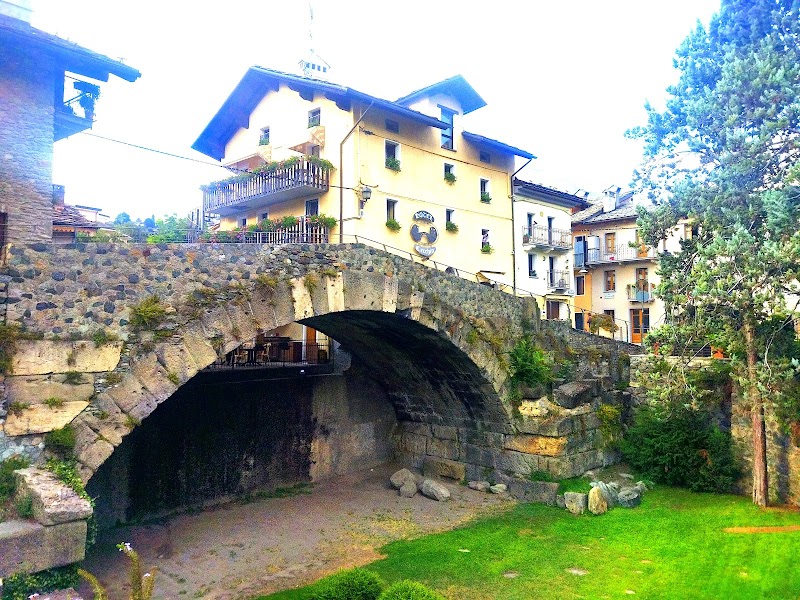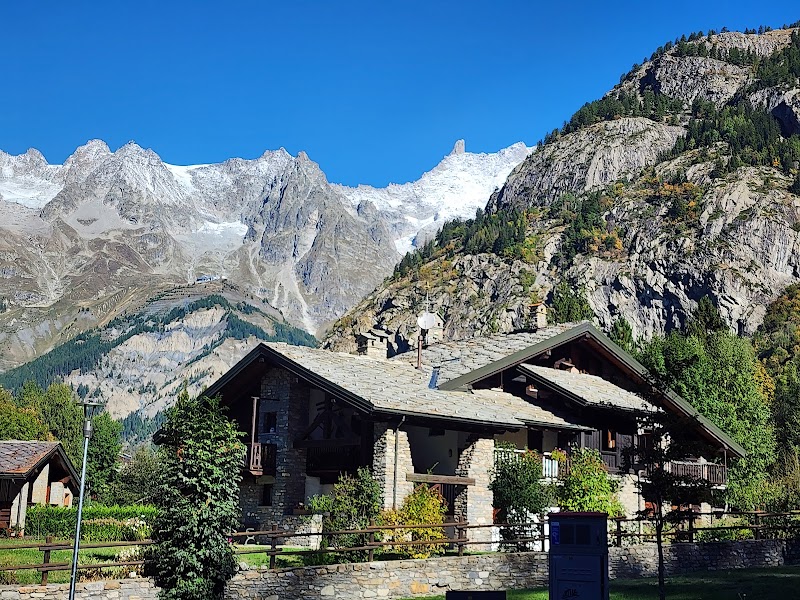Did you know that the Aosta Valley, the smallest region in Italy, boasts over a hundred castles, and the highest peaks in the Alps? This charming Italian niche offers an alluring mix of rich history, stunning natural beauty, and world-class outdoor activities. Whether it's the towering Gran Paradiso and Mont Blanc, or majestic medieval fortresses like Fenis Castle, the Aosta Valley is a treasure trove waiting to be discovered.
Your tourist map of Aosta Valley is your key to navigate this breathtaking destination. It provides a comprehensive overview of the region's highlights and helps you curate an unforgettable journey. With this map, you're set to uncover the hidden gems and iconic landmarks that make the Aosta Valley a unique and unforgettable destination. Also, you can explore more Italian gems by checking out the tourist map of Sarre, another enchanting Italian destination.
" Booking.comDiscover the Hidden Gems of Aosta Valley
Nestled in the heart of the Italian Alps, the Aosta Valley offers a treasure trove of unique experiences and hidden gems. The region is not just about the highest peaks and natural beauty; there's much more for the discerning traveler to explore. From ancient Roman ruins to vibrant local gastronomy, let's unveil the best-kept secrets of the Aosta Valley. And if you're interested in further exploring Italy's rich history and culture, check out the tourist map of Piedmont.
Roman Aosta
Take a stroll through Aosta, the region's capital, and it's like you've traveled back in time. The city is known as the 'Rome of the Alps' and it's not hard to see why. From the imposing Arch of Augustus to the grand Praetorian Gate, the city is a living museum of Roman architecture. But what sets Aosta apart is its seamless blend of ancient and modern. Contemporary cafes and boutiques sit comfortably amidst the historic structures, creating a unique atmosphere.
The Food and Wine of Aosta Valley
A trip to the Aosta Valley wouldn't be complete without delving into its culinary scene. Aosta Valley's cuisine is a sumptuous mix of Italian sophistication and Alpine heartiness. Local dishes like Carbonada (a type of beef stew) and Fontina cheese are must-tries. And let's not forget about the region's wines. The vineyards cling to the slopes of the mountains, producing unique wines that are as robust as the landscape itself.
Valpelline Soup
If there's one dish that perfectly encapsulates Aosta Valley, it's the Valpelline Soup. This hearty soup, made with bread, cabbage, and Fontina cheese, is a testament to the region's culinary ingenuity. It's a warming, comforting dish that's perfect after a day of exploration. To discover more about Italy's varied gastronomy, check out our tourist map of Trentino.
The Skyscrapers of the Alps
While the Aosta Valley is renowned for its natural beauty, the region boasts a different kind of skyscraper. Home to some of the highest peaks in the Alps, including the majestic Matterhorn and the towering Monte Rosa, these mountains are more than just a backdrop, they're an integral part of the region's identity.
The Lesser-Known Castles of Aosta Valley
Often referred to as the 'Valley of a Hundred Castles', the Aosta Valley lives up to its reputation. While Fenis Castle might be the most famous, there are many more that warrant a visit. Castles like Verres and Saint-Pierre offer a fascinating glimpse into the region's past. Each castle has its own unique story to tell, from strategic fortresses to opulent residences.
Verres Castle
Perched on a rocky hilltop, Verres Castle is a sight to behold. Unlike many other castles in the region, Verres stands as a single, imposing block of stone. It's a stark reminder of the power and influence of the lords of Verres, who once ruled over the region.
Saint-Pierre Castle
With its striking red towers, Saint-Pierre Castle is a picture-perfect example of a fairy-tale castle. While the exterior is stunning, the true beauty of Saint-Pierre Castle lies within its walls. The castle houses a museum dedicated to the natural history of the Aosta Valley, offering a unique blend of culture, history, and science.

Practical Information for Aosta Valley
Transportation and Mobility
Getting around the Aosta Valley is relatively straightforward. Public transportation is efficient with an extensive bus network connecting the main towns and attractions. The Aosta Valley Transport Company (SVAP) operates these services, with details available on their official website. For those eager to explore at their own pace, renting a car or a bike is a great option. Remember to respect the local traffic regulations and always be alert to the mountainous terrain.
Schedules and Prices
Most attractions in Aosta Valley operate from 9 am to 7 pm, with slight variations depending on the season. It's always best to confirm visiting hours on the official websites of the attractions. As for the prices, entry fees for most historical sites and museums range from 5 to 10 euros, while outdoor activities such as skiing or hiking are generally free, unless you opt for guided tours or equipment rental.
Safety Tips
Though Aosta Valley is generally safe, it's important to take certain precautions. When hiking or skiing, always respect the marked trails and check weather conditions beforehand. If you're driving, be mindful of the winding mountain roads and sudden changes in weather. Also, remember to have travel insurance that covers any unexpected incidents.
Practical Recommendations
The best times to visit Aosta Valley depend on what you want to do. For skiing and winter sports, the prime season is from December to April. If you're interested in hiking and enjoying the outdoors, the months from June to September offer the best weather. Regardless of when you visit, pack layers as temperatures can vary significantly throughout the day.

Frequently Asked Questions about Aosta Valley
What unique shopping experiences are available in Aosta Valley?
Shopping in Aosta Valley is a delightful mix of the traditional and the contemporary. Aosta's main street, Via Porta Pretoria, is lined with boutiques selling everything from local crafts to high-end fashion. For a truly unique experience, visit the weekly open-air market where you can find local products ranging from handmade crafts to fresh produce. And don't forget to check out the region's renowned wine shops where you can sample and buy the valley's excellent wines.
Are there any wellness retreats or spas in Aosta Valley?
Aosta Valley offers a wealth of wellness retreats and spas, making it an ideal destination for those seeking relaxation and rejuvenation. Pré-Saint-Didier, Saint-Vincent, and Monterosa Spa are among the top wellness destinations in the region, offering thermal baths, massages, and beauty treatments in a stunning alpine setting. Be sure to book in advance as these retreats can be very popular, particularly in the winter season.
What are some unique cultural events in Aosta Valley?
Aosta Valley hosts an array of cultural events that offer a deep dive into the region's rich history and traditions. The Saint Ursus Fair in January is a major event, featuring parades, traditional music, and artisanal products. In summer, don't miss the historic Medieval Festival in Fénis or the Vinum wine festival in Arnad. These events are a great way to experience the local culture and meet the warm and friendly people of Aosta Valley.
What are some traditional dishes to try in Aosta Valley?
While you may have already heard about Valpelline soup, there are many more traditional dishes to try in Aosta Valley. Carbonada, a hearty beef stew, and Fontina cheese, used in many local recipes, are staples of Aosta Valley cuisine. For dessert, try the Tegole d'Aosta, almond cookies that are as delicious as they are unique to the region.
What are some lesser-known outdoor activities in Aosta Valley?
Beyond the popular skiing and hiking, Aosta Valley offers a range of other outdoor activities that are less known but equally thrilling. Paragliding over the beautiful landscape, white water rafting in the Dora Baltea River, and ice climbing on the region's frozen waterfalls are just a few examples. Always remember to engage a local guide or reputable tour operator to ensure your safety during these activities.
Can I explore Aosta Valley's natural beauty outside of the popular tourist trails?
Yes, Aosta Valley is home to a number of lesser-known trails and parks that are perfect for off-the-beaten-path exploration. The Nature Park of Mont Avic, for example, offers serene hiking trails through unspoiled forests and past sparkling mountain lakes. Always ensure you have the right gear and respect the local environment when exploring these natural areas.


